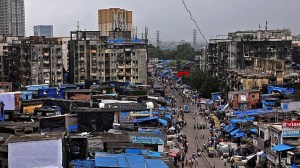It’s about terror, not Sachar
His report is part of the India story, but please don’t connect it to the Mumbai attacks

The report of the prime minister’s high-level committee on the social, educational and economic status of Indian Muslims is a painstakingly documented product, with mint-fresh statistics. It is brutally frank on prejudice, the thwarted hopes of some, replete with analysis of why in some states Muslim women’s literacy rates are higher than Hindu male literacy rates. It is a supreme display of self-confidence from a third-world democracy which has one of the world’s largest Muslim populations. And, though not hardcover, when hurled at people still reeling under the impact of a 60-hour terror encounter, the Sachar Report can hurt.
Just hours after the shock and horror of the Mumbai terror strikes, the world stood by, and India was reassured. Commiserations and concern flowed in and there was the recognition that it was an attack on the world, with Parsees, Hindus, Muslims, Jews and Christians, all terrorised.
However, soon after, a strange sub-text was slipped into the discourse — the Western and Pakistani media suddenly started discussing the state of the Indian Muslim and how it treats its minorities. What added ammunition to these arguments, were facts lifted from the Sachar Report on inadequate civic facilities, drop-out rates, etc. All facts, all true, all documented, but for the want of a better parliamentary word, all pathetically irrelevant.
As the “gunmen” (to use the BBC’s term) were in the process of tearing Mumbai’s hotels down, the innuendo was that India was somehow being “got back at” by members of a “disgruntled” minority — a minority getting back for Babri Masjid, Godhra, high drop-out rates amongst young Muslim boys in UP and Bihar, and perhaps even their graduation rate being lower than “others” in the arts stream.
Lo and behold, there was also an email, written in bizarre Hindi — that all Hindi and Urdu speakers would know in a second could have only originated outside of India, in a place where the Hindu-Muslim binary discourse has frozen since 1947, discussing the accession of states, characterising the Hindu as a bania — all sentences from a lost time, arguments simply never accepted by millions of robust Indian Muslims. But no, the whisper of Sachar was in the air, and discussions, particularly in the Western media, continued to allude to this revolutionary framework which hinted at the “gunmen” as virtually the mother of all revolts. Of 150 crore agriculturists, weavers, school teachers, film stars, cricketers, unemployed, beedi-rollers, carpet makers, scientists and lyricists having decided that Enough is Enough — to quote the very provocative and odd slogan picked by NDTV 24×7, but that’s another story — and striking out at India.
The Indian Mujahideen was also alluded to, and how (in the words of a former ISI chief) India has had its “Tamils, angry Christians and Leftists, opposed to capitalist development”, so why blame anyone else?
The first problem was the allusion that somehow Indian Muslims had participated in this heinous act of butchery — an extremely callous statement, untrue, given the evidence at hand so far, and, more importantly, diversionary.
When 9/11 or 7/7 happened, the world was expected to stand back and see it as “pure evil”. The history professors were locked up in their libraries: the world (read mainstream international press) never said it was the descendants of Hiroshima who did it, or the Viet Cong children settling an old score. No one spoke after 7/7 of how it could have been any of the old colonies, divided and pillaged for centuries who may have casually lobbed a bomb at the District Line. It’s odd that India getting hit somehow does get historians and sociologists active, so fast and rather sloppily.
Of course, we have our million and one mutinies, our sorrows, our tales of discrimination, injustice, tears, and assassinations. Clearly, all is far from Kodak-perfect in the Indian family. Like all old civilisations or families, we have our secrets and our dark dungeons where old battles are being waged and the knives are out. But India is also a third-world democracy, which has dared to come up with what was 60 years ago seen as an audaciously hopeful plot, and managed to take the story forward.
The final statements on our imminent Balkanisation have been penciled several times, but a poor, third world country somehow still manages to get there. An emerging economy, one that retains its political freedoms unlike most of its neighbours, has produced Nobel laureates, missions to the moon, Booker winners, song and dance sequences in the middle of staid tales — seriously unparalleled in the world. For the sheer number of software and science graduates, spelling-bee winners and grit, we have been the source of so much surprise. But surprise at a multi-cultural democracy dissolves into envy and, soon, disdain for dirty railway platforms, hungry children, the Naxal insurgency, incidents of Dalit suppression, all sub-plots that of course exist alongside.
India, on the other hand, has not even argued that what it is suffering now is another manifestation (if one was needed) of a unilateral and irresponsible War on Terror gone so hopelessly wrong that it has left virulent hate laboratories in its neighbourhood. India is not even going to go out and try and “smoke out” anyone. If anything, the noises (if you can somehow take out the crackle and the bluster on TV) being made are cold, but not cowboy-like. India is looking for its own solutions, which like its bustling bazaars and democracy will be unique and are bound to be blessed with a long shelf-life.
And for all those who think the idea of India is bound to go bust, they should think again. For the “world” to have a future, this experience of India Being, for all our edges, inequalities, rages and whinges, living together, irrespective of the shape of your nose, colour, or which book you say your prayers from, may have the blueprint for the survival of the Blue Planet. So please, don’t throw the Sachar Report at us, not now. It’s only a chapter in the India Story, and the wrong one to go on about at the moment.
seema.chishtiexpressindia.com


- 01
- 02
- 03
- 04
- 05




























